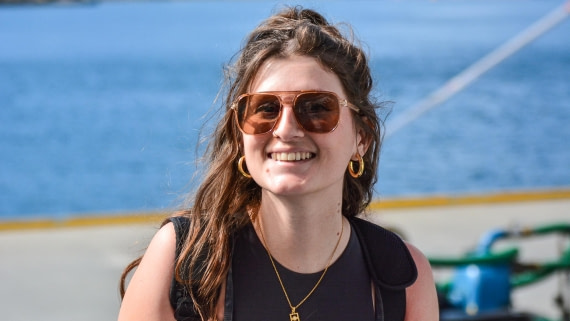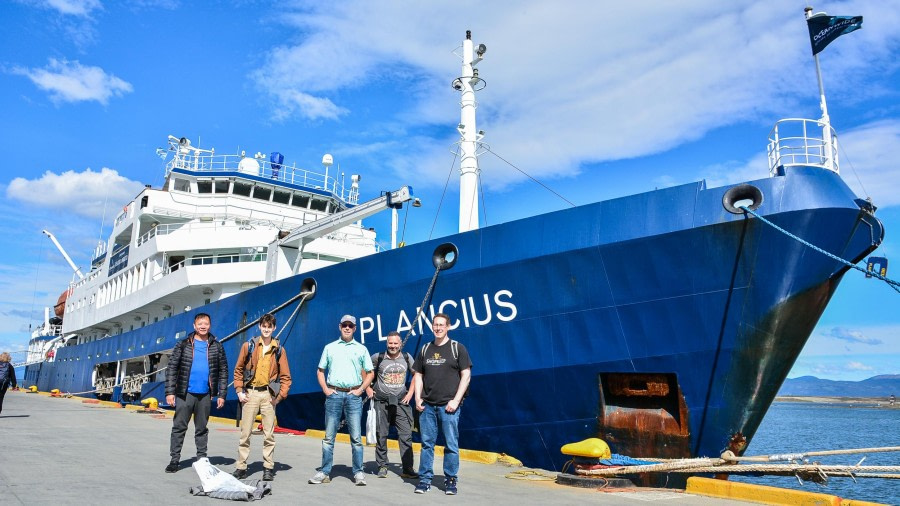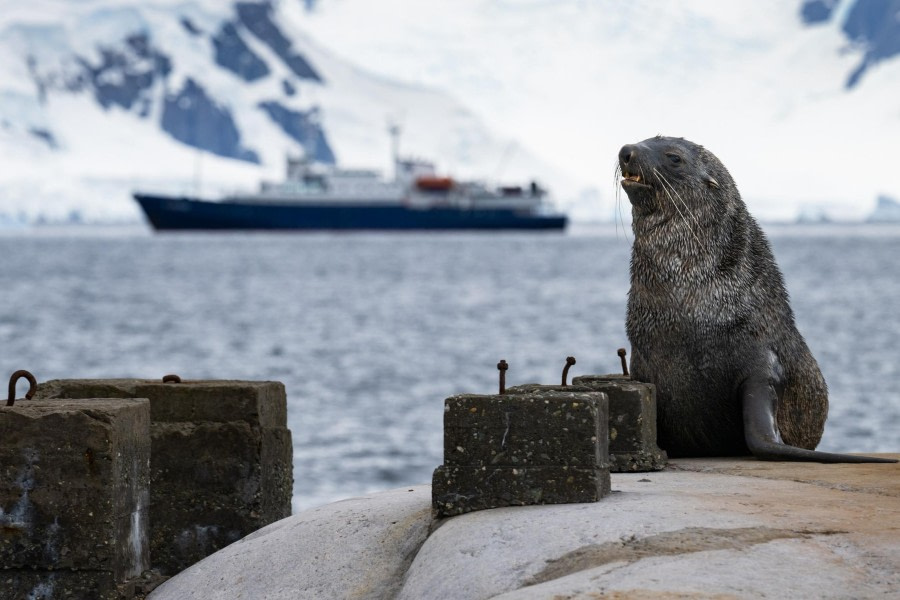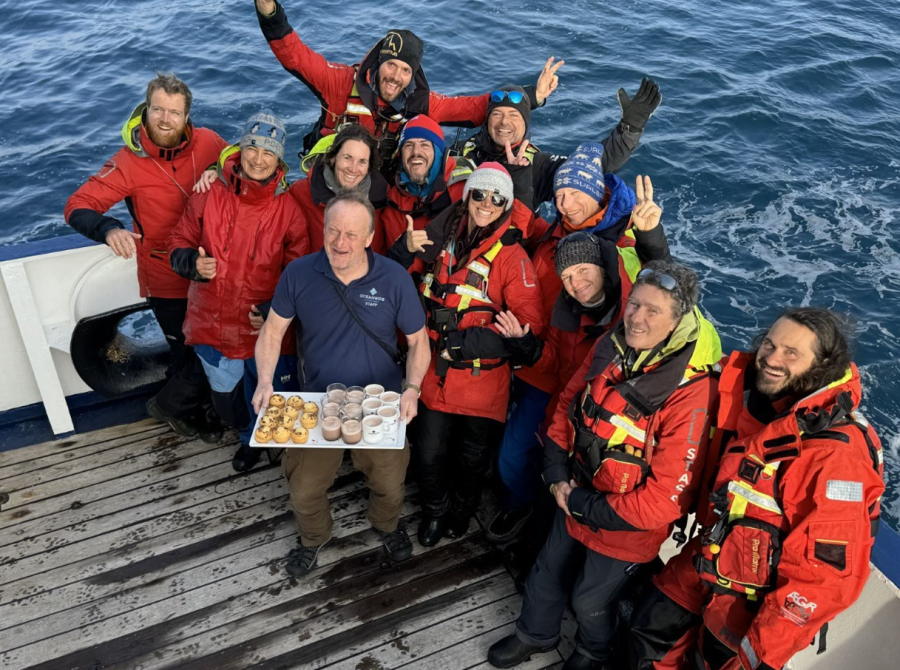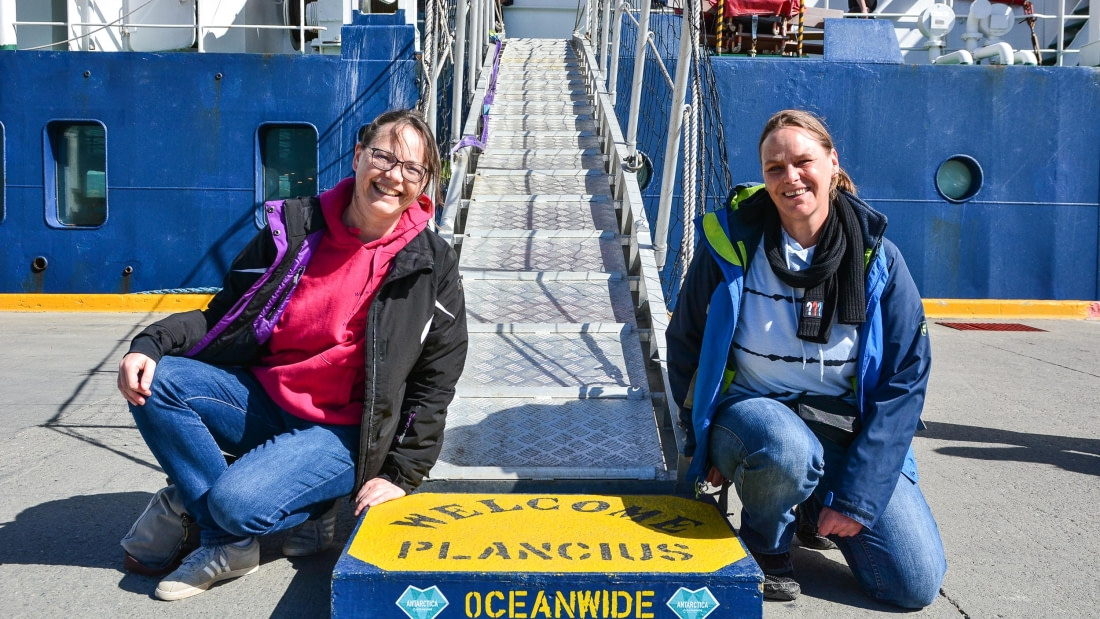| Datum: |
18.02.2024 |
| Positie: |
65°06.9’S / 64°03.3’W |
| Wind: |
N-2 |
| Weer: |
Overcast |
| Luchttemperatuur: |
0 |
We were woken up at 7am by Michael. We were just in front of the Canal Lemaire, about to cross it. A unique and unmissable sight. The Lemaire Channel is a narrow passage on the West of Danco coast in the Antarctic peninsula, bordered to the East by the mainland and to the West by Booth Island. The surrounding mountains rise to over 1,000 m (about 3280.84 feet). The narrowness of the channel makes for meticulous and very impressive navigation. For more than thirty minutes, we all stood on the snow-covered bridges, enjoying the spectacle.
After a good breakfast, we got ready for our activities. Mountaineering, kayaking and zodiac cruises were on the program in Girard Bay, south of Lemaire channel. The weather was overcast but not very windy, and the water in the bay was a glassy mélange of brash ice and bergy bits and small to mediums-size icebergs ranging from blocky to dome shapes, pinnacles and dry docks. We soon spotted an Adelie penguin on the ice, the third species of penguin we've discovered in the last days. Black and white with a white ring around the eye.
Further on, a crabeater seal was resting. Contrary to its name, these seals do not eat crabs, but mainly krill. They have a specific set of teeth, and their jaws, once clenched, work like a sieve. The seals are then able to spit out the sea water while keeping the elements of their meal, krill and small fish. The light on the glacier was fantastic, and we sailed through the brash ice to get close to the leopard seals. Massive, with a strong jaw and spots on its skin, this solitary marine mammal is a penguin predator.
We cruised a good distance along the edge of the glacier, known as the Leay glacier, then we had the chance to encounter a young humpback whale. She came closer to us before diving and showing up her fluke.
After lunch, which was always appreciated on board, we disembarked on Yalour island. This island, which is very different from the previous sites we visited, is home to many mosses and a few species of vascular plants, including the Antarctic Hair Grass. The snow covering most of the island took on a red or green colour, typical of this site. The island is also home to colonies of Adelie penguins. Young penguins, still in their down feathers, were flexing their wings and gesticulating. Others insisted on asking one of their parents for food. The giant petrel kept watch and flew over the colony several times, no doubt trying to predate a youngster left alone.
The afternoon was also an opportunity to take a zodiac cruise between the surrounding islets and icebergs. The weather was cloudy, but the experience was pleasant. We were able to get close to Antarctic terns and, if we were lucky, a whale that was curious about our activities.
Back on board, Michael and the expedition team gave us some insight on the next day schedule; Koen gave us a presentation on photography, and Elke on the citizen science program with the Happy Whales and penguin colony counts. After that, we were invited to dress warmly for dinner on the aft deck! A barbecue was waiting for us, as was a real buffet, with a magnificent view over the Lemaire channel in which we were sheltered for the evening. Music and dancing helped to liven up the end of the evening.
MOUNTAINEERING
Location AM: Hovgaard Island
Our crew this morning for Hovgaard awoke to a beautiful morning with low hanging clouds and an early start with the amazing transit through the Lemaire Channel and over to Hovgaard and Pleneau Island.
In calm winds and comfortable temperatures, we got ashore and climbed up to the glacier past some Skua nest with chicks. We’d been forewarned by the parents, and we gained the snow further left in more awkward ground to give them space.
We had a lovely, true Antarctic mountaineering experience, albeit the higher we climbed the less visibility we had, climbing literally into the clouds until the 2 groups couldn’t see each other 100m (about 328.08 feet) apart. We gained the high Col of Hovgaard and returned by a loop to the beach and pick up and some photos of the Skua chicks which the parents were now quite happy to allow.
Location PM: Cape Tuxen
In the afternoon our team went on an exploratory “adventure” (the meaning of which is an undertaking with an unknown outcome). Heading towards Cape Tuxen, opposite the Yalour islands, where neither Massimo or Dave/Gnarly, our guides had ever been.
With a 2 nautical mile approach, mostly through thick brash ice, the dice were rolling right up to when we emerged in an ice-free bay with a perfect beach landing.
Easy snowshoeing led us up to a bench and access to a very cool glacier, surrounded by many huge ice cliffs and glacier cirques. Oh yeah, this was our first Antarctic Continental land!
A great day out.
KAYAKING
Location AM: Hovgaard Island, Penola Strait
The weather conditions were not the best lately, so we decided to take advantage of this morning with no precipitations to do it in two rounds, we will have the Taiwanese group first and then the Spanish group.
We had the chance to paddle following the shoreline to see from very close all type of sea birds: Kelp gulls, Brown skuas, Antarctic shags, one big Giant Petrel passing by and finally some penguins swimming around some of the kayaks.
At the end of the session, the surprise of three Weddell seals was perfect to approach them in silence and see the patterns of the fur and some details from very close.
Location PM: Yalour Islands
Again the weather conditions were challenging, some precipitation during the outing but sea conditions were ok to proceed. We paddle in between some growlers of ice, many berg bits drifting and some beautiful and massive icebergs in the distance.

